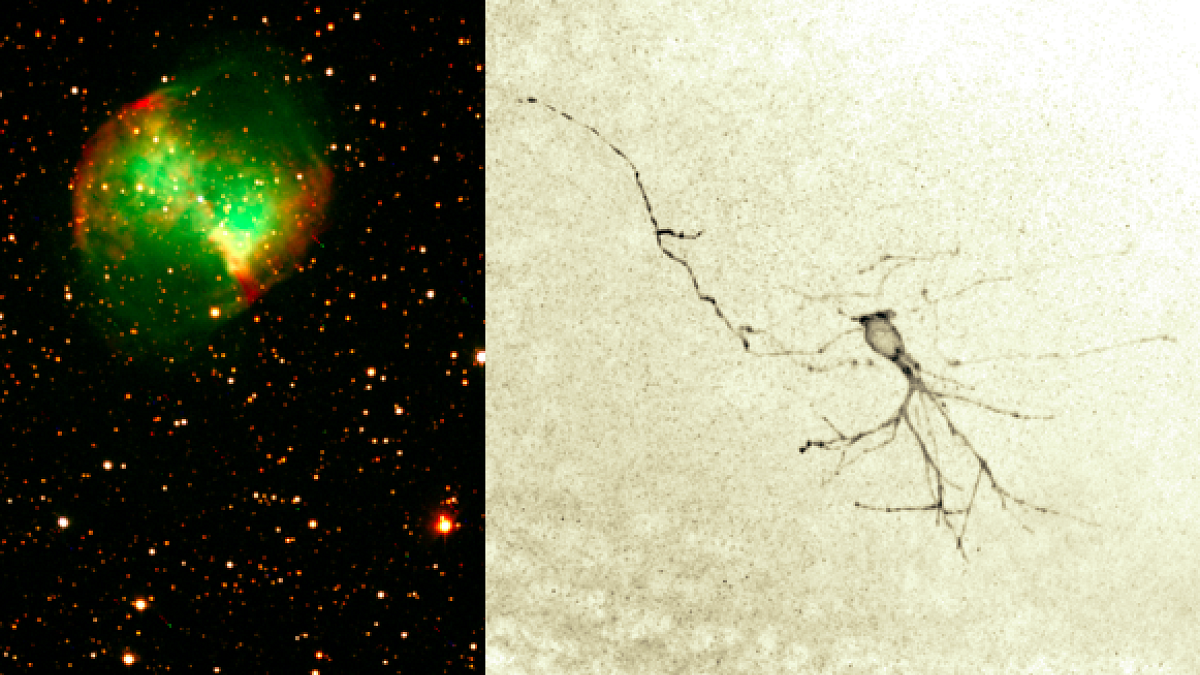“Creative” might not be the first word that comes to mind when thinking about science, but founders of the group ArtSci Oregon say that’s a common misconception they hope to change.
Anne Martin, Joseph Bruckner and Adam Fries are University of Oregon researchers who share a similar passion for leveraging art and aesthetics to promote and support scientific research. They founded ArtSci Oregon to organize efforts to bring art and science together as a tool for communicating with the nonscience community.
The group will host its first event, a “Research as Art” gallery exhibition and competition that runs through Nov. 26 at Oakshire Brewing Public House, 207 Madison St. in Eugene. The show kicks off with an opening reception from 6 to 8 p.m. Thursday, Oct. 24.
Fries, who manages the biological imaging core within the university’s Genomics and Cell Characterization Core Facility, hopes ArtSci Oregon will provide a new way of informing the local community about the scientific work going on every day at the UO.
“This allows for the community to say, ‘Oh, this is what’s currently happening in research in ways I can understand and gets me connected to current science,’” Fries said.
Martin, a postdoctoral researcher studying neural circuit formation, and Bruckner, a postdoctoral fellow studying how microbes influence neurodevelopment, see the blending of science and art as not only natural, but necessary. Martin uses her degree in graphic design to create works of fine art and infographics to simplify complex scientific concepts.
“Graphic design is really useful in science because you have to communicate what you do to people who don’t necessarily have a background in it,” Martin said. “We shouldn’t pigeonhole ourselves into any one area as opposed to another.”
The organization’s first event will showcase current UO research. The exhibition will be on display from Oct. 24 through Nov. 26 and will feature submissions from 51 entrants from the UO community, ranging from undergraduates to faculty members and representing a range of disciplines.
At the Oct. 24 public reception, a panel of judges composed of specialists in science, art and communication will evaluate the printed pieces of scientific art based on aesthetics and scientific merit and choose four awardees. ArtSci Oregon will provide light appetizers and Oakshire beverages will be available for purchase.
Martin, Bruckner and Fries hope the event will foster broader community discussion of the work going on at the UO and spark ideas for future events and collaborations. They plan to host more exhibits throughout the year, but they also see opportunities to offer trainings to other scientists about how to use art to communicate their work.
“We want this to be useful to the community,” Martin said.
The group is eager for others to contribute to their organization. Ultimately, they hope events like this month’s exhibition will diminish the misconception that art and science are not connected.
“The most successful scientists are highly creative,” Bruckner said. “So why not celebrate that and use it to convey this idea to the community that creativity is really important in science?”
—By Denise Silfee, Office for Research and Innovation


